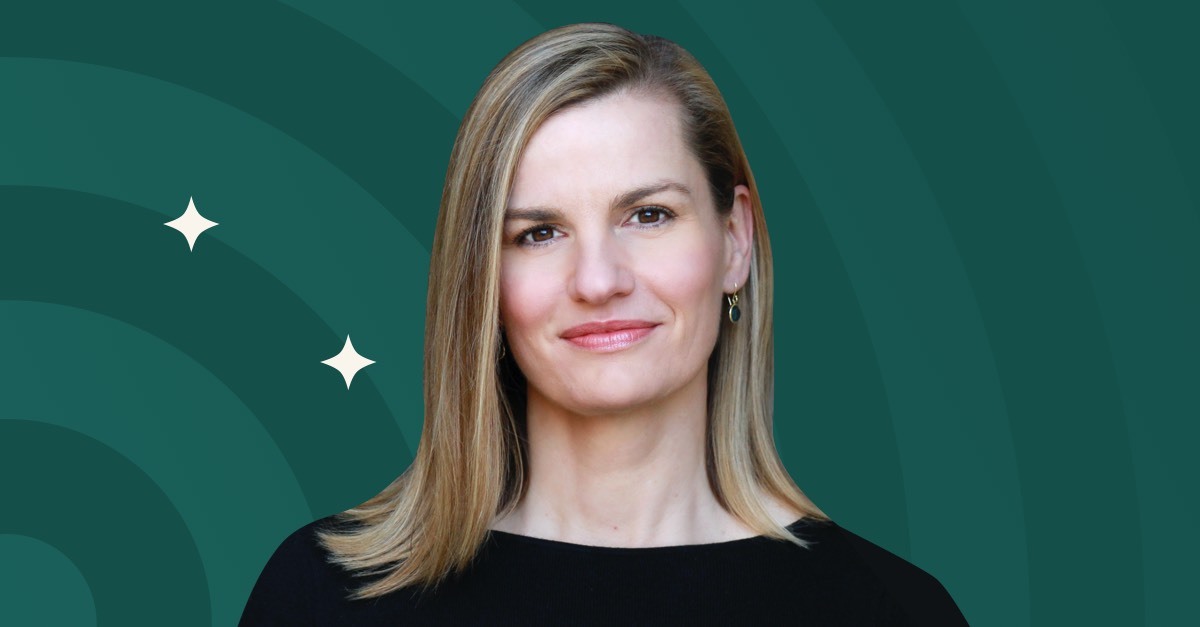Flight Templates are templated flights, or sets of questions, written by some of the world’s preeminent business leaders. With Flight Templates, Balloon users get unparalleled access to seasoned perspectives and proven business strategies across all areas of business, including leadership, product, marketing & sales, innovation, employee experience, culture, and more. This feature is part of a series on The Insight that profiles Balloon’s Flight Template authors.
Work and life, reason and emotion, speed and thoughtfulness, productivity and empathy: These are only some of the dichotomies that business leaders often try to balance as they craft their company’s cultures and care for their employees’ wellbeings. While most of them strive for an impossible balance upon each spectrum, Sally Thornton thinks there is a better way to work—and a better word to use.
“I don’t like the word balance, because it connotes 50/50, and it sets most people up to feel inadequate when they don’t find that perfect middle,” Thornton said. “What we really want to shoot for is a healthy work-life blend, and that can look different from person to person.”
A two-time TEDx speaker and thought leader on the future of work, Thornton is the founder and CEO of Forshay, a consulting firm that helps teams do their best work through executive recruiting, project-based work, and improving the system of work through increased diversity, inclusion, and belonging. At Forshay, she often helps her clients—including Google, Airbnb, Levi’s, Uber, Gilead, Sonos, and eBay—reimagine their workforce by grounding them in the behavioral science and neuroscience for how work is currently seen and experienced. Using a combination of new frameworks, data, and storytelling, she sparks curiosity about what work could be. Oftentimes, she said, that begins with using different language.
In addition to replacing ‘balance’ with ‘blend,’ Thornton prefers ‘better practices’ to ‘best practices’ to eschew a fixed mindset, ‘overwork’ to ‘burnout’ to remind people that professional exhaustion is often caused by external factors rather than personality flaws, and, perhaps most importantly, ‘inclusion and diversity’ to ‘diversity and inclusion,’ to lead with what is really required for any diverse team to thrive.
“You have to lead with inclusion before you try to recruit for or promote diversity. Otherwise, it won’t stick,” Thornton said. “Even if you have a wonderfully diverse team, your culture needs to support and truly include their voices, their ideas. Because if you’re not really listening to them, they’ll stop talking, and you won’t get the cognitive or financial benefits that come from having that diverse team.”
Of course, implementing practices that create a systemically inclusive culture is no simple task, so Thornton has distilled Forshay’s best lessons into her new flight template series, Building a More Inclusive and Productive Team. The five-part series will help leaders understand what is causing overwork and inhibiting psychological safety for their teams—the two main hindrances to a truly inclusive, productive culture, according to Thornton—and will reveal how they can solve these pervasive issues. The series includes the following flight templates:
- Develop an Inclusive Job Description
- Identify a Culture Add
- Reduce Overwork: Team Collaboration Boundaries
- Retain Top Talent
“D&I, or I&D, as we call it, I hope one day will not be a separate department,” said Thornton. “I’m excited for when it’s be an ingrained part of the culture, like the water we swim in. But first, we have to ensure the water is clean.”
Just as she avoids prescription in her language, Thornton never offers a one-size-fits-all solution to her clients when it comes to solving emotional, cultural, or financial problems. Every company—and every employee—is unique, and each one thrives in a different spot along those common spectrums. Finding those sweet spots is a complex endeavor, but it is the crux of what Thornton calls human-centered leadership.
“From a leadership perspective, you have to create some space for people to say how they feel. If you don’t, it will eventually work against you,” Thornton said. “Even just a little bit of investment in allowing your team members to be human will create more fluidity in communication, collaboration, and productivity.”
Thornton sees human-centered leadership as the peak of team management, and her work at Forshay as well as her flight template series will help each company find its best path to reach it. While there are no absolutes, the distinguished entrepreneur does offer one insight that is applicable to virtually every question you might be asking:
“Whatever the problem, there’s research to build on, and an experiment to run.”
